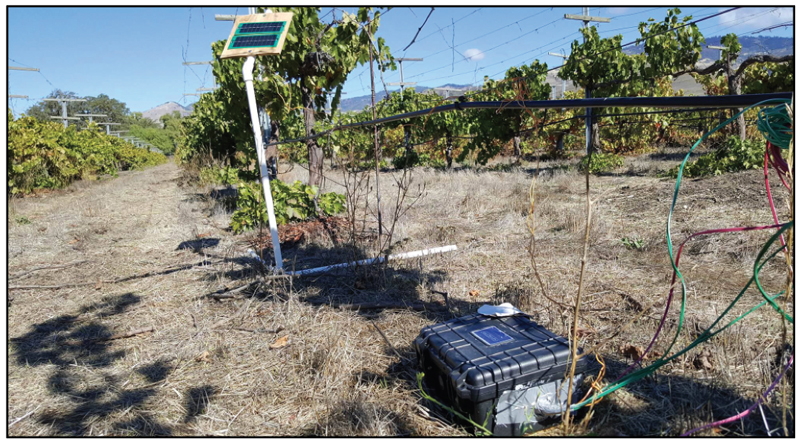UC Santa Barbara researchers bring internet data to rural areas | Technology | April 7-13, 2017 | Vol. 18.4
By Marissa Nall
Staff Writer

Jim Yager pulls a sensor device behind a tractor which collects data on soil temperature and compaction. -Image courtesy of UC Santa Barbara
Research by two UC Santa Barbara computer science professors is helping to tackle problems remote areas face accessing wireless technology and data, including Native American and agricultural communities.
With eight years of wireless networking experience under her belt, UCSB’s Elizabeth Belding was looking to have a direct social impact with her research. She began thinking of creative ways to bring internet connectivity to people who didn’t have it and improve their experience even when connections were slow or unreliable, to “enable them to be more active internet contributors.”
One of those communities was being served by Tribal Digital Village, an initiative launched by the Southern California Tribal Chairmen’s Association in Santa Barbara and San Diego counties. In conjunction with Belding’s project, the group has deployed unused television frequencies and a wireless ISP network to connect several homes on a reservation in San Diego County, with the goal to prove out the model for further distribution.
Belding is also studying ways to take advantage of intermittent signals to get more information to users. Software in development would push content they want to access to their phones when they had a signal without them needing to take an active role.
“How can we take what we know about usage patterns to make educated guesses about content relevance and push that content out to them?” Belding asked.
Among the 17 tribal reservation communities in San Diego County, around 270 homes now have broadband access since the SCTCA launched the initiative, or about 10 percent. More than 100 businesses are also served for free by a network anchored among 60 community institutions.
In studying the issue, one nuance Belding found is that many isolated communities are most interested in viewing and exchanging information within their community.

A sensor system measures soil moisture at different depths to determine irrigation needs. -Image courtesy of UC Santa Barbara
“If you know things like that … if you know there’s a propensity to access information that’s physically close, you can do things like prioritizing traffic or proactively deliver it,” she said, adding that the program would help “automate that process so that it doesn’t require manual intervention.”
Security is also an important factor.
“The main thing would be making sure they receive only content that they’re supposed to access, that they have the right access to the right content.”
A second project targets farmers, who also frequently contend with weak, unreliable or expensive signals when trying to process data about weather, soil conditions and plant health.
Part of the problem is that most systems try to send huge amounts of data off the farm, said UCSB professor Chandra Krintz. Instead, she and a team of computer scientists and agricultural researchers developed a technology that brings the analytics software to the data.
With “an army of students,” the team has identified some of the most popular sensing technologies and are working to analyze the data they collect. As the Internet of Things becomes more widely adopted, those technologies are likely to see more standardization, making the data easier for farmers to access, Krintz said.
“We’re hoping that, with a solution like ours, we’ll force the vendors and sensors to change, to offer on-farm access to data.”
Privacy of information is also a major concern among agricultural businesses.
“Farmers want to control their data,” Krintz said, but many sensor or equipment manufacturers have access to it, sometimes extracting fees if growers want to view it.
“It’s extremely valuable, almost more valuable than the crops themselves,” Krintz said. “And the growers have no control. We want to provide a different system that allows the growers to choose. If they want to keep their data or sell their data, they can, and if they want to keep it private, they can as well.”
The system comes in a box the size of two milk crates, containing distributed computers, batteries, and both wireless and wired networking, able to download software updates as needed.
“There needs to be an alternative solution so people have more choice,” Krintz said.
Both projects got funding from the National Science Foundation, including $550,000 for Belding’s work with Tribal Digital Village and $1.2 million Krintz received in collaboration with UCSB professor Rich Wolski and researchers at CSU Fresno and Cal Poly San Luis Obispo.


